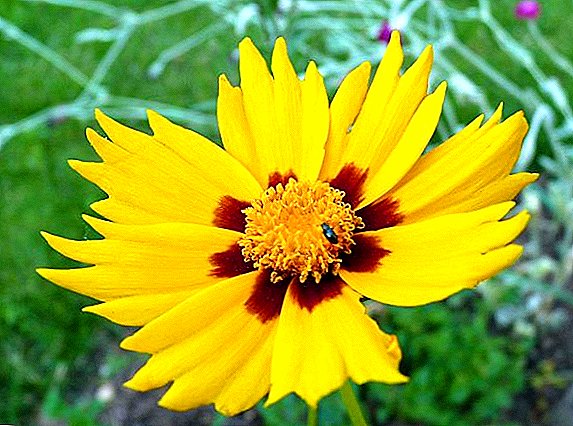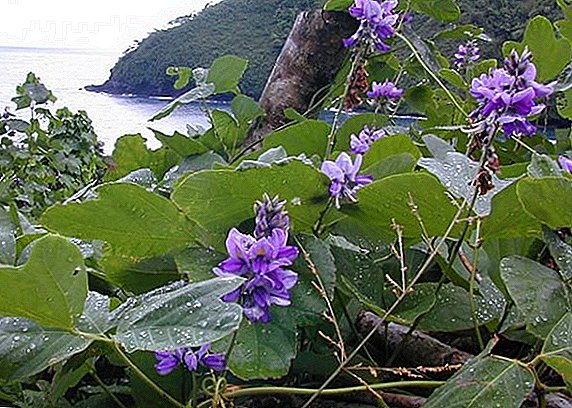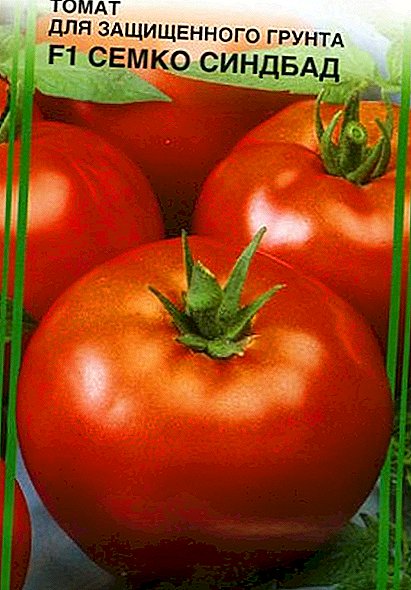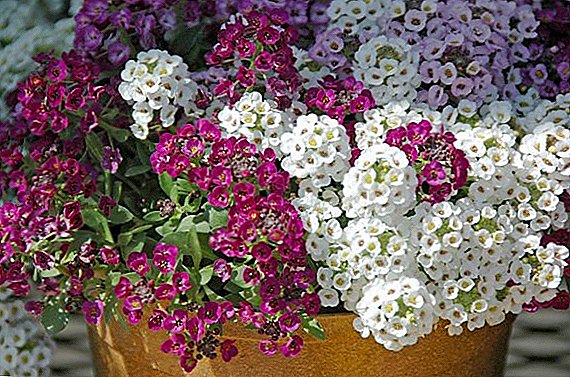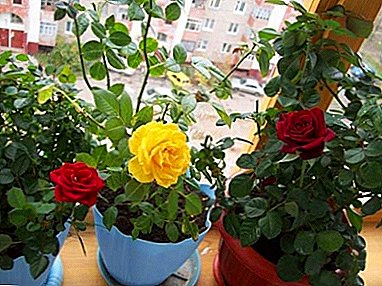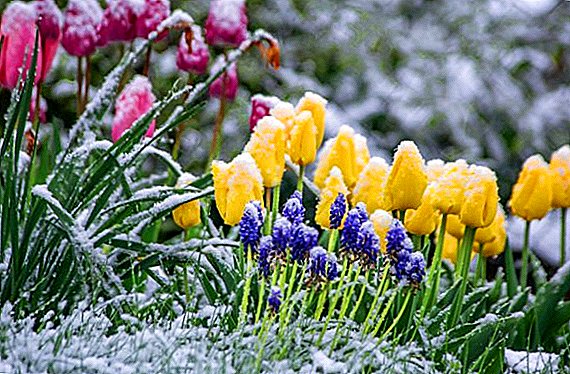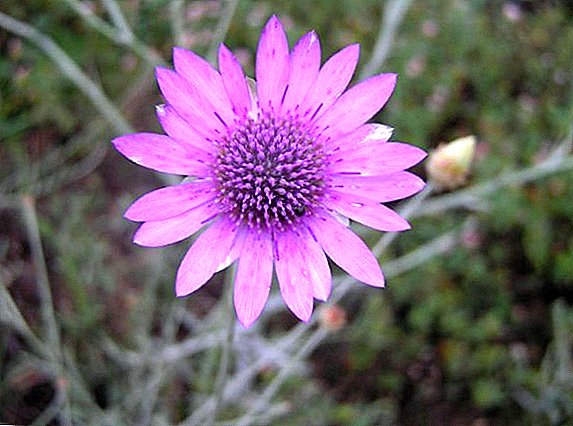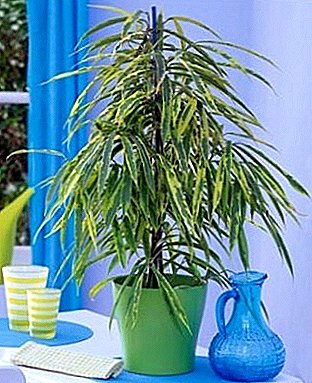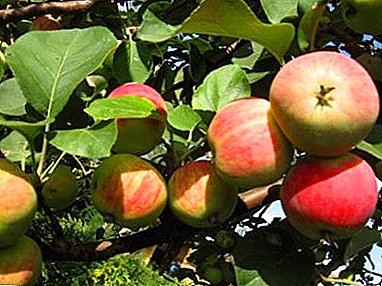
Russian dessert apple variety Winter Beauty is the result of the crossing of Red Delicious and Antonovka ordinary.
The hybrid got acclimatized in the Moscow gardens, in the central and north-western regions. This class is given the first place among the best, because with many advantages, the variety is devoid of obvious minuses. In our article we will give a detailed description of the Winter Beauty apple tree and the rules for growing this variety.
Breeding history
Variety Winter beauty related to the mind Apple home. This variety appeared thanks to the efforts of the amateur gardener E. M. Kamenderovsky. He received the Winter Beauty thanks to the combination of Red Delicious and Antonovka ordinary.
But the novice scientist could not independently distribute the apple tree among the population, therefore V. Suslov came to help him. He decided that this is the best apple variety in the world. Suslov was an economics scientist, but this state of affairs did not become an obstacle to the search for supporters among breeders. This thorny path had to go through the Winter Beauty before it became known in wide circles of gardeners. The variety of apple trees Winter beauty was liked by many.
In these regions, the following varieties are also successfully grown: Orlik, Pepin saffron, Melba's Daughter, Moscow Jubilee and Marat Busurin.
Photos of apple trees Winter Beauty
Check out the photos of the winter beauty apple varieties:




Pros and cons of amateur gardeners reviews
This variety boasts fruit sizes. Their size qualifies as more than average, large.
One apple can reach 200 g. With proper care, one fruit can reach 400 g.
Often this variety is used for making jam and jam., apple wine (cider). All this thanks to its exceptional taste. The main advantages, according to summer residents and gardeners, are the following description of this variety:
- large and juicy apples, which is rare for winter varieties;
- mature trees endure severe frosts;
- fruits are used to preserve and create wine;
- depending on the care and feeding the variety has a wide range of taste;
- fruits have a beautiful appearance.
For the preparation of jams and cider they also use the following varieties: Papirovka, Orlovim, Golden Summer, Anis.
These are the positive reviews about this variety from experienced gardeners. The only drawback they have noticed is in terms of storage. Although this is a winter variety, the fruits of the Winter Beauty are not stored very well. In wooden boxes and in dry rooms, apples can lie until January.
After that, dry rot forms on the peel, completely spoiling the fruit. Because of this, apples are stored in the freezer, where they are able to lie until March or April.
Characteristics and description of the variety
This apple tree belongs to the middle layer. It grows up to 5-6 meters. The crown has a conic-rounded shape, branches sprawling, medium thickened. The main skeletal branches grow at an angle of 60 degrees to the trunk, different naked.
Yield
The fruits of the Winter Beauty apple tree ripen at the same time, towards the end of September (approximately 25 numbers). Consumer period starts immediately after removal from the tree. The fruits have the correct rounded shape, their weight is on average 200 grams.
The main color of the fruit is yellow-green.
 Cover color - a slightly blurry purple blush. Located on most of the fruit or across its surface. Subcutaneous spots are not visible on the skin. The flesh of apples is fine-grained, snow-white, the density is average, juicy, prickly. Aromatic to moderate. Taste is pleasant, sweet and sour.
Cover color - a slightly blurry purple blush. Located on most of the fruit or across its surface. Subcutaneous spots are not visible on the skin. The flesh of apples is fine-grained, snow-white, the density is average, juicy, prickly. Aromatic to moderate. Taste is pleasant, sweet and sour.
With one tree, the yield can reach 150 kg of fruit. Yield is above average. It is considered skoroplodnym variety, which fruits from 4-5 years after planting. In a low degree can occur periodicity of fruiting.
High yields are also demonstrated: Orlovskoye Polesye, Veteran, Kuibyshevsky, Vityaz and Marat Busurin.
The life of the tree is up to 50 years. And with proper care, the period of fruiting and life expectancy reaches 70 years.
Winter Beauty Landing
So that the apple tree quickly settled down and did not suffer from diseases, disembarkation should be made in autumn, before the first frost. At such moments, the juice almost ceases to circulate in the trees, which makes it possible to transfer the cold normally:
- The seedling should not be deeply buried. The root neck (transition of roots to the trunk) should be located 5-7 cm above the ground level.
- For the growth of plants need land preparation. It includes several stages:
- digging a cubic pit with a size of 60x60x60 cm;
- horse humus or ash with peat should be laid on the bottom;
- all pour water;
- fertilizers are poured with a thin layer of soil;
- followed by a layer of sand.
- The seedling is sent to the hole, the roots should be evenly straighten, then sprinkle with earth.
Care
Feeding the Winter Beauty is needed in the spring and autumn with various complex fertilizers without nitrogen. If the earth is rich in nutrients, then frequent feeding is not needed. If the soil is sandy, then fertilizer is required every year.
In the first year after disembarkation, 80-100% of flowers should be cut off. This is required to improve the survival rate of the tree. Next you need to cut off half of the still green crop (just laid fruit).
Watering is done 4-5 times a month per 1 bucket of water per 1 adult tree, 2 times a day.
 It is important to ensure good watering in July and August. Finish watering in August, otherwise there is a prolonged growth of shoots, which has a bad effect on winter hardiness.
It is important to ensure good watering in July and August. Finish watering in August, otherwise there is a prolonged growth of shoots, which has a bad effect on winter hardiness.
This apple tree is resistant to frost, but to save the plant from early frosts and a snowless winter, it is necessary to mulch it with horse humus near the tree circle, wrap the trunk with special materials for shelter or nylon tights. Kapron tights or a special rodent net are used to fight hares and mice.
Resistance to frost can also boast varieties: Arkadik, Aport blood-red, Lada, Moscow Jubilee and Moscow Late.
It is important to keep in mind the contents of the wheel circle. No plants should grow in it, it should be cleared from weeds, loosened.
Apple processing
In the spring after planting, it is important to treat the bark of the tree with lime mixture, which will scare away pests. After the appearance of the first leaves, the crown is actively treated for scab. After the appearance of the ovaries of inflorescences, the tree is treated with insect repellents. Regular processing is required and after the appearance of the first fruits.
Pruning
An important element of tree care is pruning. It allows you not only to adjust the yield, the size of the fruit, but also to fight diseases:
- when planting, the branches of the sapling are cut to 1/3. This will start the crown bookmark faster;
- pruning is done every year in early spring before the appearance of the kidneys;
- at full pruning of the branch, the cut is made near the very base, no stumps are left;
- branches with fruit, descending to the ground, you need to clean up.
Thinning is required every year to increase yields. and prevent the occurrence of pests and diseases.
Diseases and pests
Apple tree variety Winter beauty is highly immune and resistant to disease. It rarely succumbs to powdery mildew, late blight and aphid attacks. It is resistant to scab (very rarely affected by fungus) and frost down to -34 degrees.
To protect against pests in the spring, the trunk of the apple tree is whitened with lime mortar, and in the winter, the stem should be wrapped with nylon pantyhose or a special net from an invasion of hares.
We bring to your attention more information about pests on apple trees in special articles of the site: silkworms, hawthorn, codling moth, fruit sapwood, mining apple moth.
Conclusion
If you, having read the description of the variety of apple trees Winter Beauty, want to plant this tree in your house, then you should know that with the correct selection of a sapling, as well as taking into account all the requirements, the planting does not take much time. And the correct pruning, care and feeding of the tree will make it strong, regularly yielding tasty and beautiful fruits.


